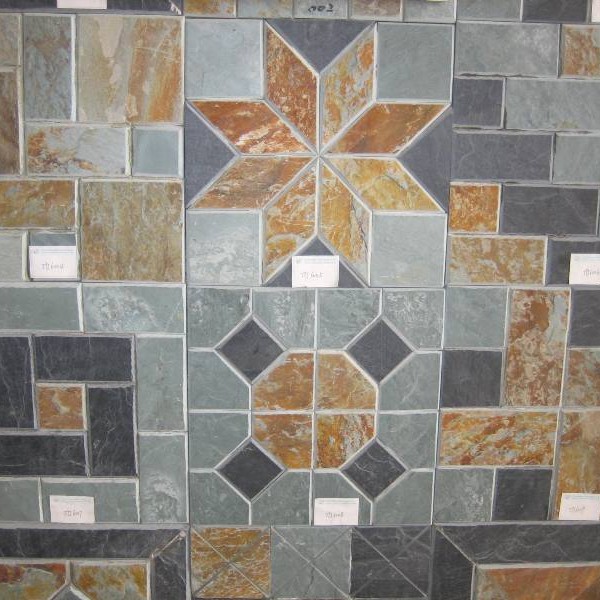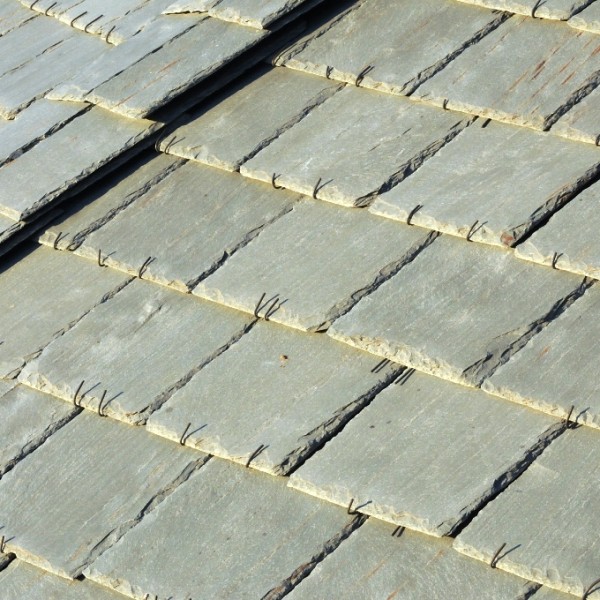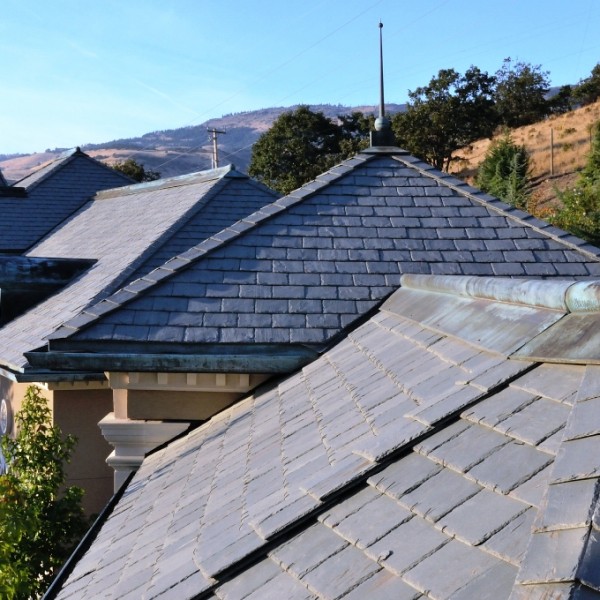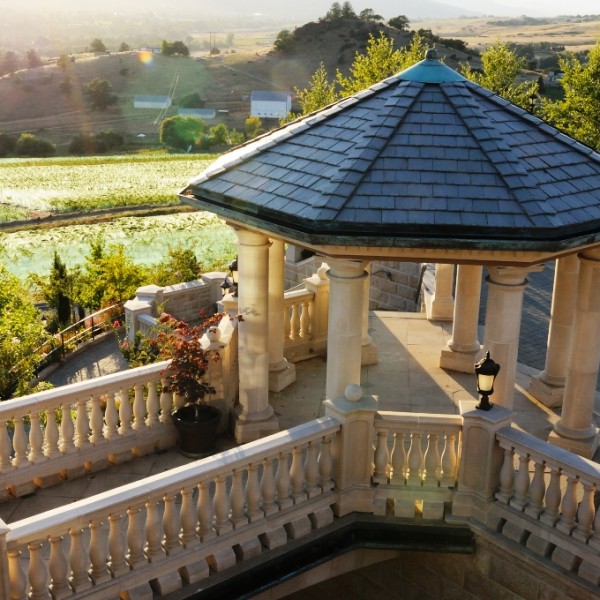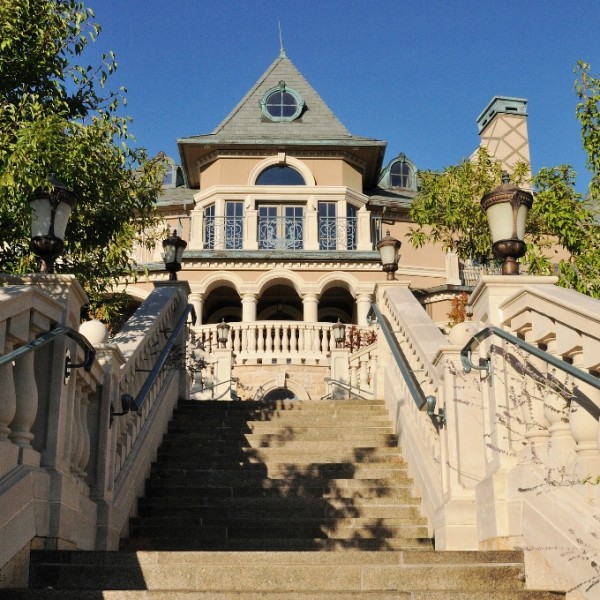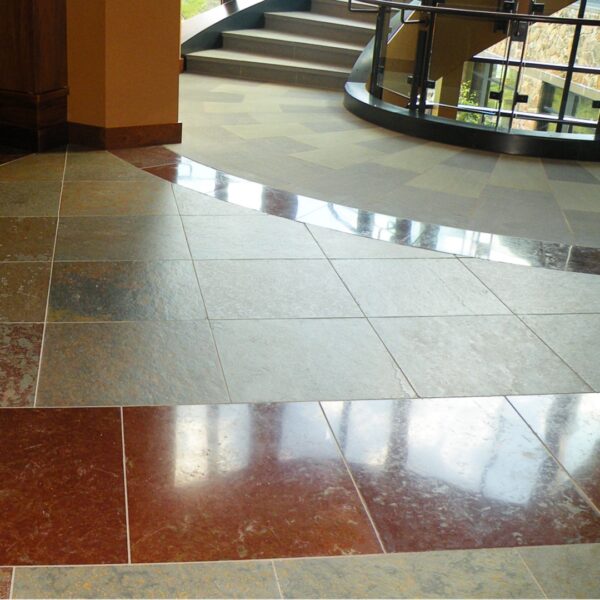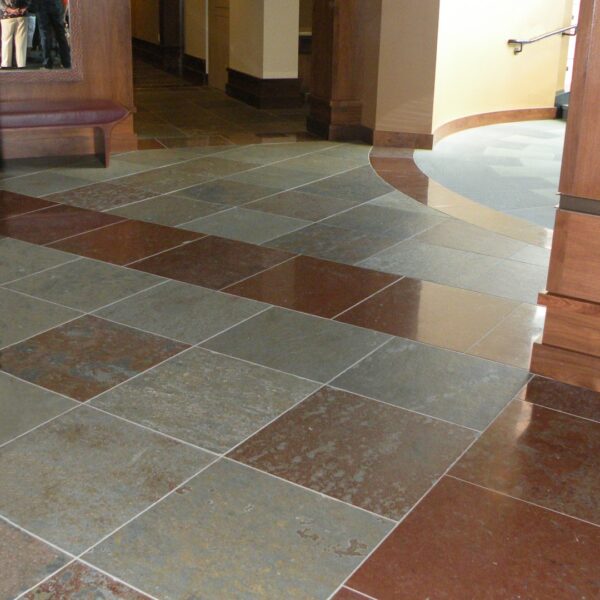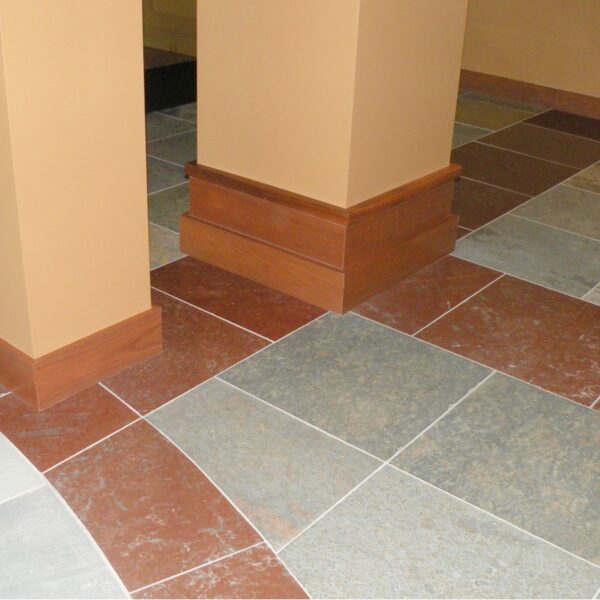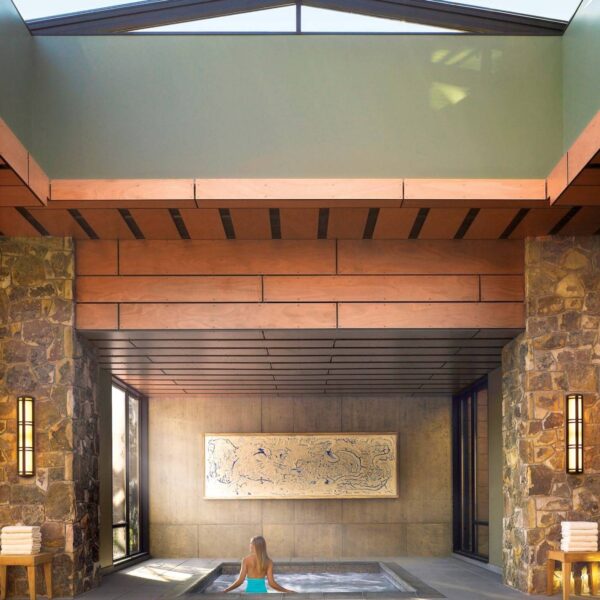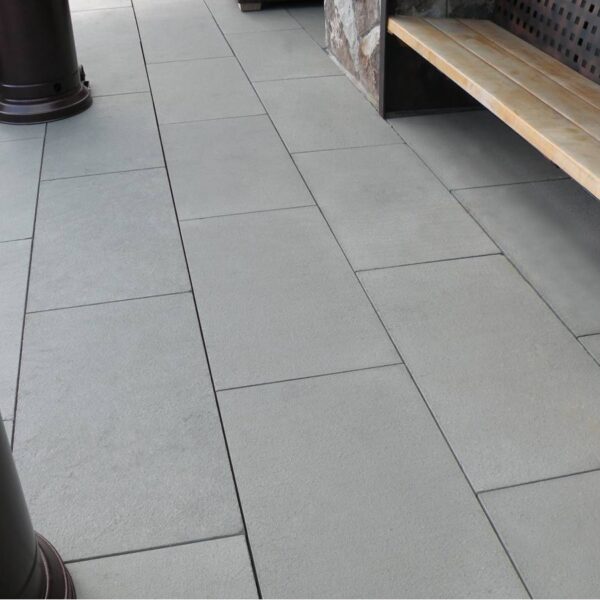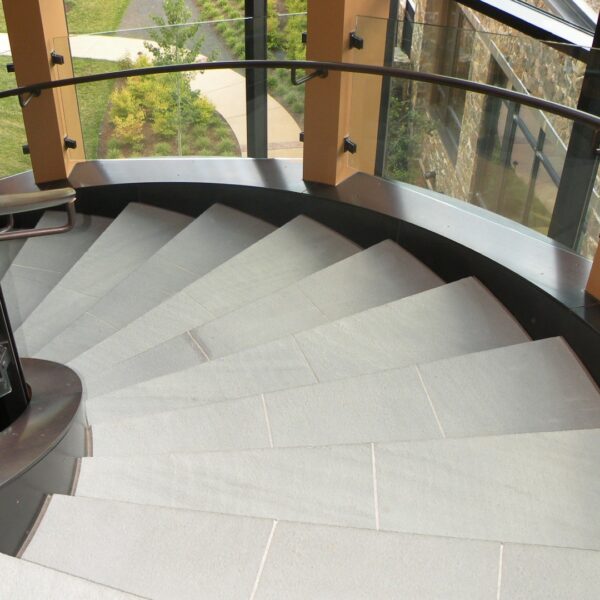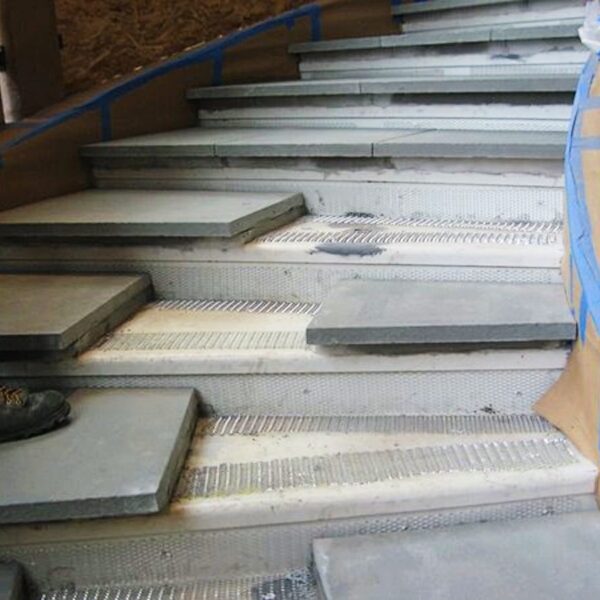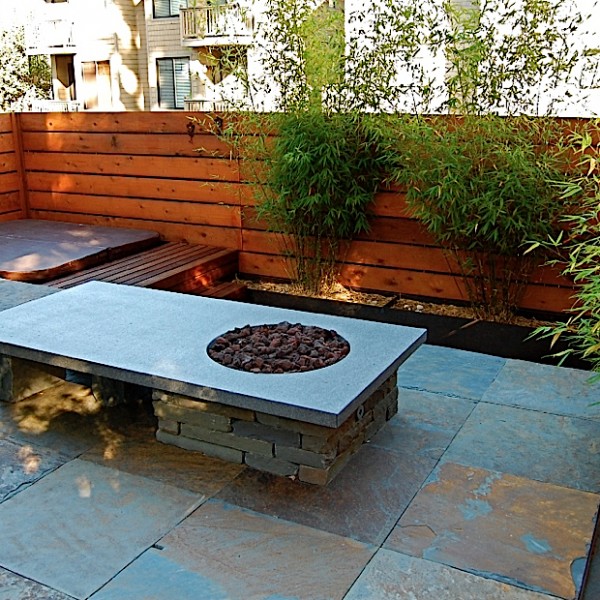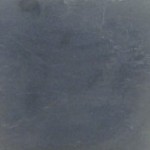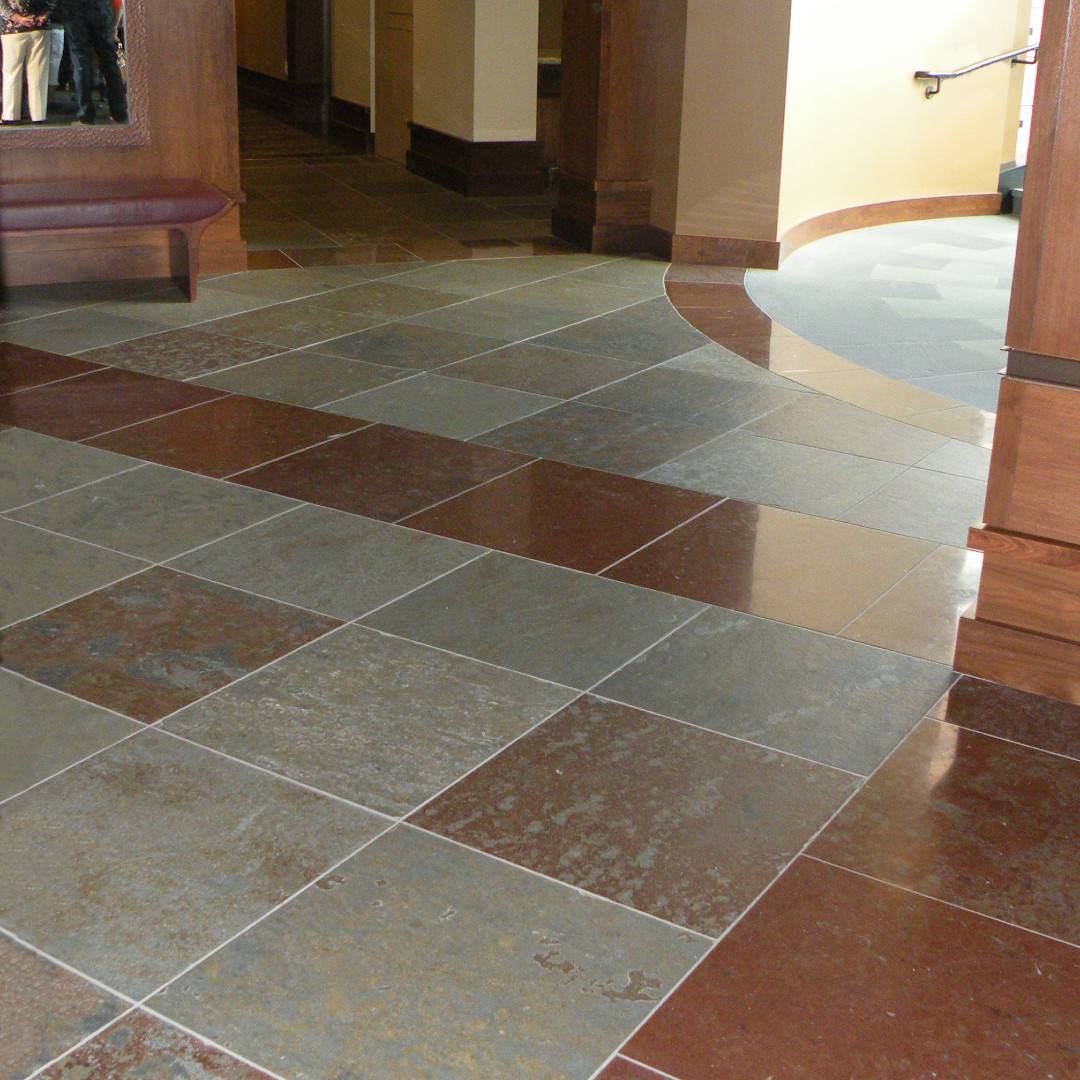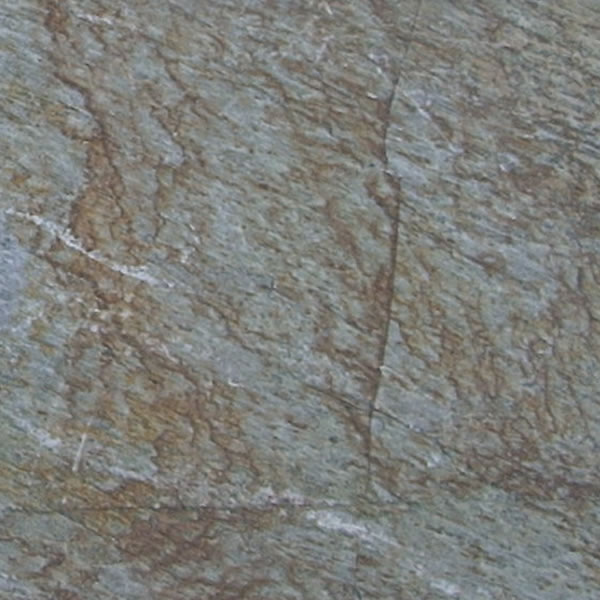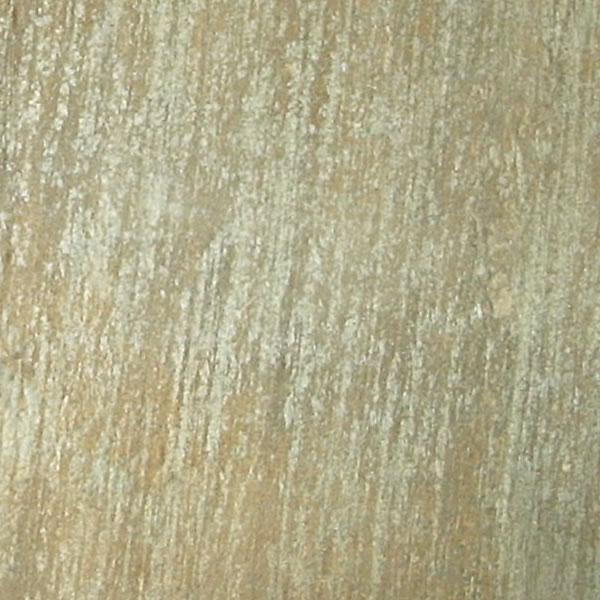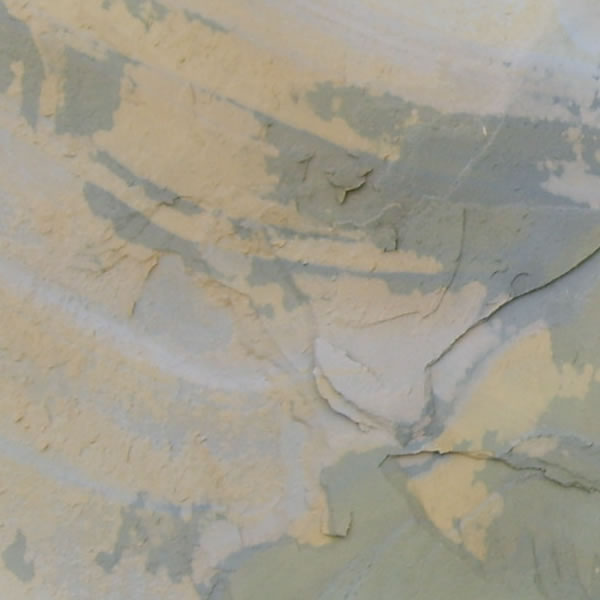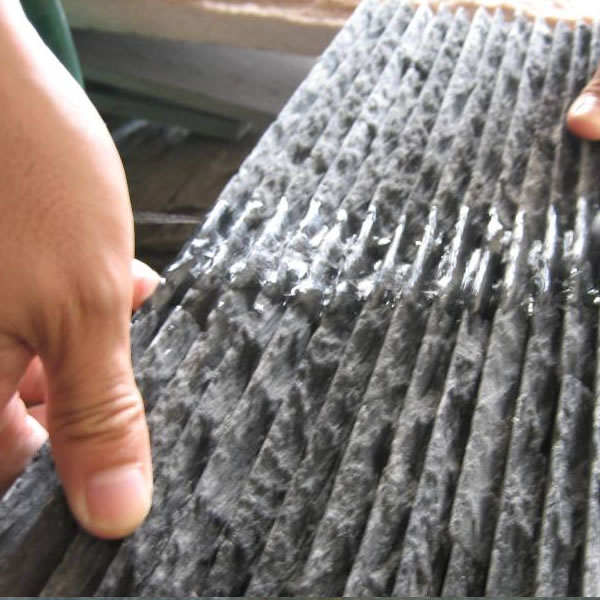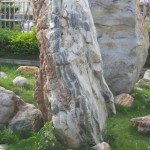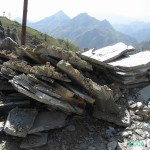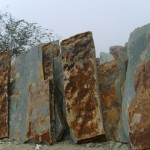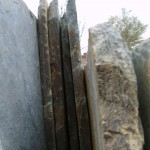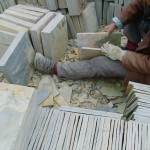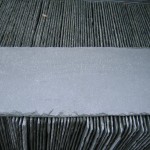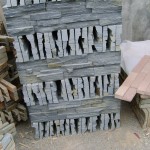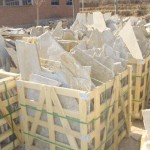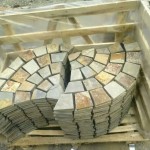Slate Building Material
Versatile And Chemically Resistant
Introducing HDG’s slate stone building material – a versatile and chemically resistant option. A traditional use of slate was the laboratory table top in chemistry labs. That application alone should serve as a great testimonial to the chemical resistance of the material. Being of the softer varieties of dimension stone types, slate is not known for particularly high abrasion or scratch resistance, yet it is used for flooring and countertop surfaces.
Slate Material Overview
Shale is the parent rock. It is made up of clay minerals. Shale can metamorphose into slate, phyllite, schist or gneiss depending on the degree of heat and pressure. Slate is the least metamorphosed of this group. Meaning that it has been subjected to the least amount of heat and pressure (low-grade metamorphism). It is associated with regional metamorphism due to mountain building. Slate is foliated and when expertly “cut” by striking with a specialized tool, it easily splits into thin, flat, parallel sheets of stone. This along with its chemical inertness and thermal stability make slate useful for many purposes. It is used for roofing shingles, floor tiles, and pool tables.
Slate is frequently grey in color, especially when seen, en masse, covering roofs. However, slate occurs in a variety of colors even from a single locality; for example, slate from North Wales can be found in many shades of grey, from pale to dark, and may also be purple, green or cyan. Slate is not to be confused with shale, from which it may be formed, or schist. Ninety percent of Europe’s natural slate used for roofing originates from Spain.
Slate, given its laminar construction, has the ability to be processed into thin sheets and still maintain serviceable strength and rigidity. This property makes slate the only dimension stone having been used for blackboards and roofing shingles. It was also traditionally used as the cloth-covered playing surface of billiards tables.


